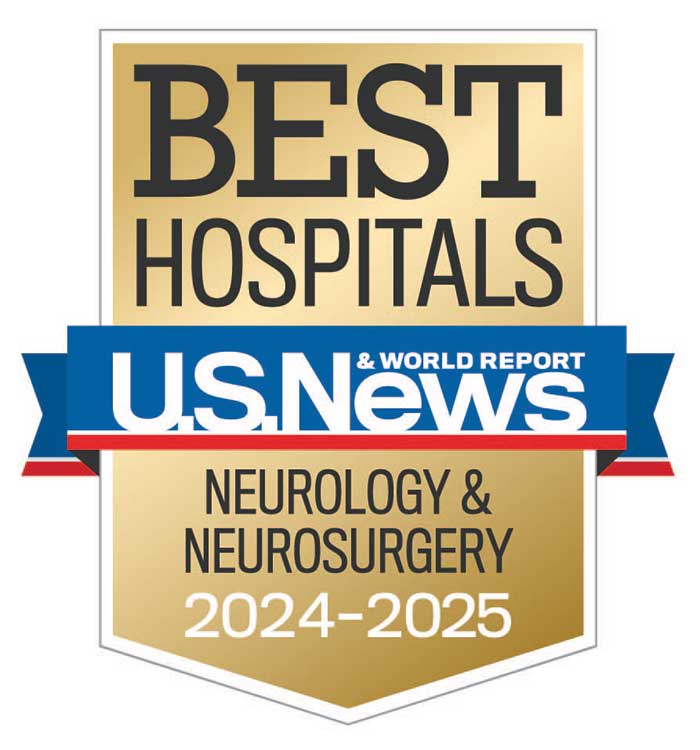Neuromodulation for the treatment of medication-refractory epilepsy
Penn State Health Neurosurgery is at the forefront of surgical treatments for medically resistant epilepsy. While epilepsy is medically controlled in approximately two-thirds of patients, for medication-refractory epilepsy, where medication and diet are unable to manage the condition, surgical options become necessary for long-term treatment.
“Neurostimulation devices improve outcomes through seizure control where seizures become less frequent and severe,” said Dr. Michael D. Sather, surgical director of the Comprehensive Epilepsy Center at Penn State Health Milton S. Hershey Medical Center and associate professor of neurosurgery in the Department of Neurosurgery at Penn State College of Medicine. “The devices use electrical stimulation to modify the brain networks to reduce seizure occurrence, which improves the patient’s quality of life.”
Forms of neuromodulation
All three primary forms of neuromodulation are offered to patients with epilepsy at Penn State Health:
- Responsive neurostimulation (RNS)
- Vagal nerve stimulation (VNS)
- Deep brain stimulation (DBS)
Each neuromodulation device features a two-part system, including a generator for the electric signal and the portion of the device that delivers stimulation from the generator to the neural target.
The RNS method is a target-based therapy dependent on locating the source of epileptic seizures in the patient’s brain. This form of closed-loop stimulation is best for cases where seizures have been located, but that area of the brain cannot be removed safely or without neurologic deficit.
VNS and DBS are agnostic devices that do not rely on determining the location of seizures in the brain.
The VNS method uses the vagus nerve in the neck as a pathway to provide stimulation to the brain. This is the least invasive form of neuromodulation and a good option for patients resistant to or at high risk of complications from brain surgery.
“VNS treatment is common for patients with moderate to severe developmental delays, including cerebral palsy or developmental abnormalities in the brain,” Sather said. “For these patients, brain surgery is used less commonly, but they often do really well with VNS. With a significant seizure reduction, we’re able to improve mood and alertness with quality of life and reduced medication.”
The DBS method provides continual stimulation through embedded electrodes in the brain. DBS received FDA certification in 2018 and is the newest method of neuromodulation for patients with epilepsy. Due to its recent approval and disruption brought on by the coronavirus pandemic, Sather said the procedure is in a “ramp-up” stage, where the volume of practice continues to grow.
Positive outcomes in neuromodulation
When VNS emerged, it was the only option for patients unable to undergo other forms of epilepsy surgeries.
“Today, treatment outcomes have improved further since we’re able to utilize several neuromodulation devices in the practice,” Sather said. “It’s not a contraindication to place another neuromodulation device or remove one and place another when it’s indicated for seizure control.”
While initial treatment plans rarely involve the use of more than one device, having one device is not equivalent to having another. Having multiple neuromodulation devices available to choose from gives neurologists more treatment possibilities.
Data for deep brain stimulation shows that, regardless of a patient’s previous treatment or epilepsy surgery, seizure reduction rates remain the same. Sather reports seizure reduction is approximately 75% over seven years, whether or not a patient has had previous neuromodulation or resective surgery.
With the VNS procedure, Sather has seen a 60% to 70% seizure reduction. The RNS procedure also provides dramatic reductions over time, with data reporting 75% to 80% seizure reduction three to seven years post-treatment.
After more than a decade of RNS in epilepsy practice, experts have seen accelerated seizure reduction through the physician’s learning curve. Sather reports that at Penn State Health, one-third of patients are “high responders,” with a seizure reduction of 90%.
“Sometimes patients have seizures coming from the temporal lobe that is dominant for memory, yet have little memory deficits. In the past, we didn’t have good options for this group of patients,” Sather said. “Now we can put electrodes in the hippocampus or temporal lobe and treat epilepsy without adversely affecting their memory.”
Patients who receive epilepsy treatment at Penn State Health are composed of approximately 70% adults and 30% children, from both referrals and direct treatment.
Penn State Health ranked first-rate for epilepsy treatment
Penn State Health’s Comprehensive Epilepsy Center is Level 4 certified by the National Association of Epilepsy Centers (NAEC), which the NAEC describes as a center that provides the more complex forms of intensive neurodiagnostic monitoring, as well as more extensive medical, neuropsychological and psychosocial treatment.
The epilepsy experts at Penn State Health also perform the highest quality neuroimaging, including MRI and functioning MRI scans. Neuroradiologists use these advanced MRIs to locate small lesions or undifferentiated lesions on the brain. In addition, the Epilepsy Center offers video EEG, which allows providers to observe seizures when they occur and to determine the frequency and location of the seizures. This gives Sather and the fellowship-trained neurologists several options for diagnostics and treatment.
Twice a month, the epilepsy treatment team convenes for patient management conferences to discuss their patients’ epilepsy journeys, history and frequency and types of seizures they experience, and to review their video EEGs. These meetings help the team decide whether to continue diagnostics or offer treatments – which is a unique benefit to patients who receive their care at Penn State Health.
“Our neurologists are fellowship trained in epilepsy,” Sather said. “They treat epilepsy specifically and do not practice general neurology, making them specialists in this area.”

Michael D. Sather, MD, FAANS
Surgical Director of the Comprehensive Epilepsy Center, Penn State Health Milton S. Hershey Medical Center
Professor of Neurosurgery, Penn State College of Medicine
Phone: 717-531-3828
Email: msather@pennstatehealth.psu.edu
Fellowship: Epilepsy Surgery, Cleveland Clinic Foundation, Cleveland, Ohio
Residency: Neurosurgery, University of Nebraska Medical Center, Omaha, Neb.
Medical School: University of Nebraska College of Medicine, Omaha, Neb.
Connect with Michael D. Sather, MD, FAANS, on Doximity

